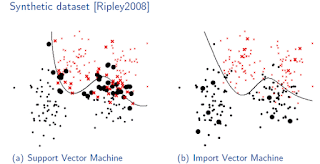More than 600 experts in technology and analytical data from around the world representing companies like Linkedin, Facebook, Google, Stratio, MongoDB or Zalando, among others, will meet for the fourth edition of Big Data Spain (www.bigdataspain.org ) (# BDS15) held in Kinepolis Madrid in the Ciudad de la Imagen in Pozuelo de Alarcon on 15 and 16 October, on how Big Data is impacting people's lives and productivity of companies.
Machine learning
Mobile phones, banking, or social networks have become not only the new forms of communication, but a huge source of information in which we reflect our daily life. Technologies, and offer good services to end users, also provide powerful sources of information companies. The study presented Alejandro Llorente, co-founder of Piperlab analyzes on Twitter behavioral characteristics of more than 145 million messages pinpointed distributed among more than 340 different economic regions in Spain, to infer the level of unemployment in a particular region or to predict whether users are in a better position to attract better opportunities and position information.
Similarly, analysis of the emails that circulate daily by a company can help improve employee happiness, as shown Miguel Romero, head of HP Hadoop architecture, and Alberto Santos HP scientific data. Emails circulating organizations are an interesting asset, not only for its content but by other functional details that respond to the following questions: Which communities in my company? Where they do occur? What are they talking about? Do you do activities together? Do they treat customers well? Knowing the answer to these questions can provide activities or actions that enhance the well-being at work.
By 2020 more than 44 zettabytes of information will be generated, according to IDC estimates. The rise of so-called Internet of Things will present data analysts are unable to analyze all the information that is received in real time infinity of connected devices. As explained Marco Laucelli, CEO of Novelti, the need to assess whether it makes sense to store all the information, how long is needed to store and, most importantly, how all that information generated pays off. And it challenges as the information received come from different sensors, which do not always send the same data type, which may occur disconnections in the transmission of data, structured data and unstructured combined add up .. .
Machines algorithms
In this context, there is growing interest in developing machines and self-learning algorithms using artificial intelligence based systems. Always associated with super robots, the truth is that today few of us interact with bipedal robots or give a ride in a car without a driver, and yet, in our daily lives are increasingly present artificial intelligence systems that recognize speech, images or analyze patterns in real time to detect credit card fraud or customize ads showing a web. Precisely Amparo Alonso, president of the Spanish Association for Artificial Intelligence (AEPIA), working with machines and self-learning algorithms and their application in various fields such as predictive maintenance engineering or prediction of gene expression in bioinformatics.
And in the world of health, Big Data, statistical analysis, self-learning models and visualization can bring benefits that translate into improved quality of life for patients, cost rationalization and better use of resources in the public health system and expose Dr. Javier Gómez Pavón, scientific data of the Central Hospital of the Red Cross.
In short, Big Data Spain (# BDS15) show how instant intelligence can calm the impatience of an increasingly doomed to the need to make decisions in real time economy. Other prominent speakers of Big Data Spain (# BDS15) are: Paco Nathan, consultant O'Reilly, with his vision of Big Data in 2016; Jason Sundram (Facebook), Kartik Paramasivam (LinkedIn) and William Vampenepe (Google) featuring in the first person as their companies face the challenge of managing so many concurrent real-time data; Jim Webber Neo Technology to teach interpret graphical database in fraud detection; or Roland Zalando Vollgraf of employing Bayesian statistics to save logistics costs.


